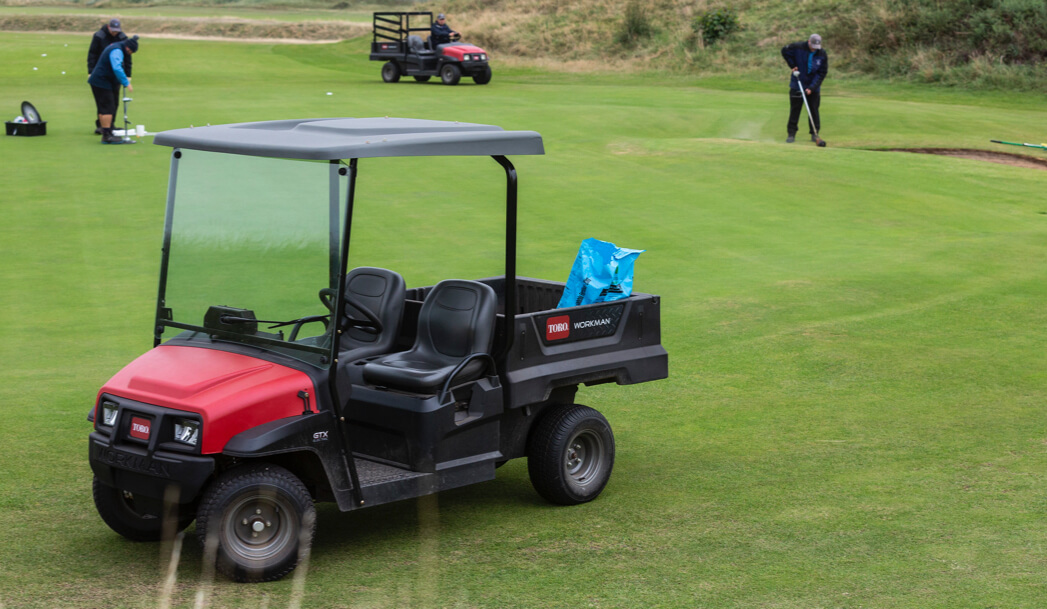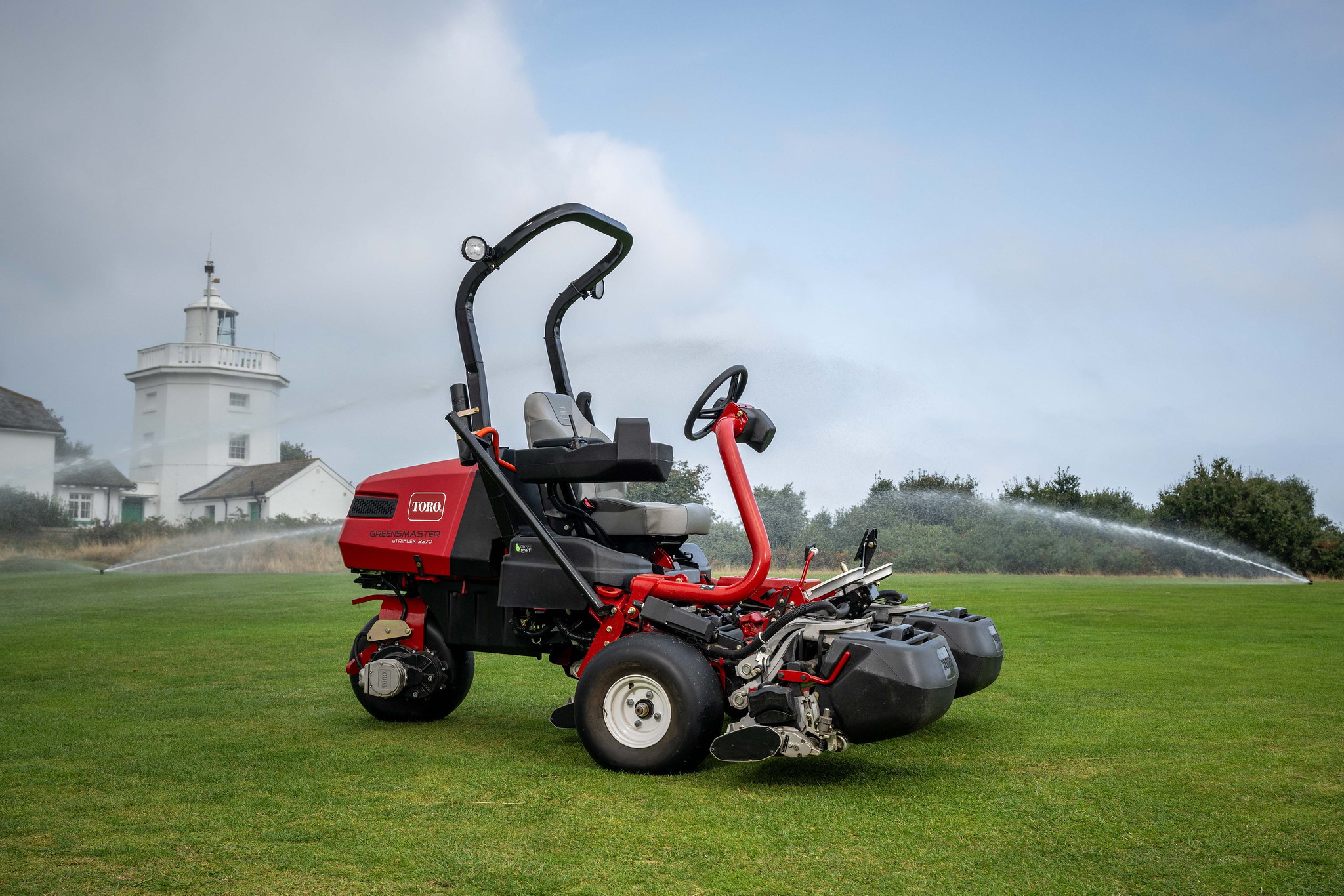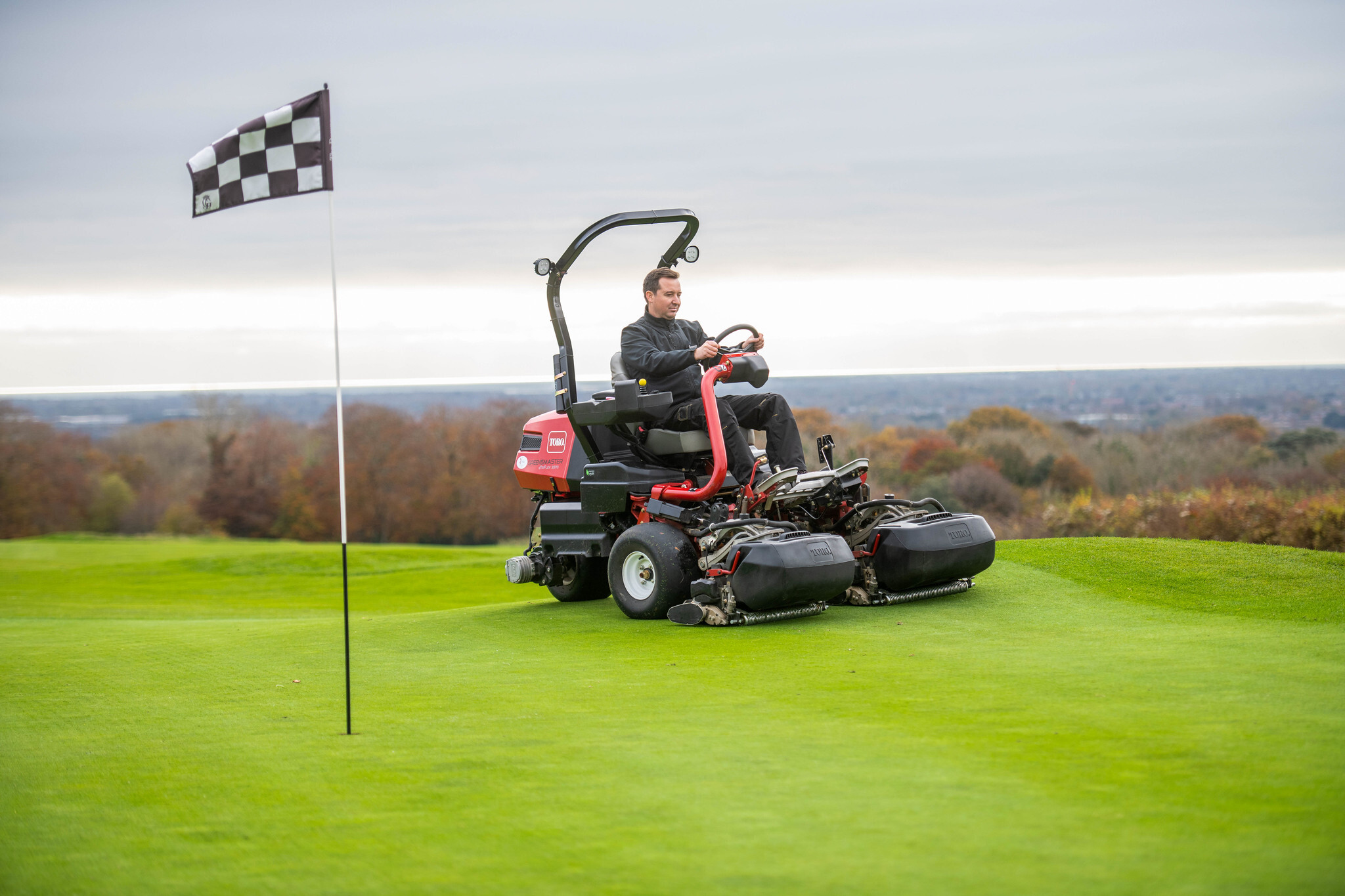The true cost of electric turfcare machinery
Many greenkeeping professionals are concerned that the electrification of turfcare machinery could impact their business – and understandably so. But, fortunately, we’re here to put any doubts to rest.
How much will the electric revolution impact your business?
Many greenkeeping professionals are understandably concerned about how this will impact their business, especially economically. Here, Lee Rowbotham, service manager at Reesink UK, the UK distributor of Toro Commercial products, the manufacturer who was pioneering in making battery-powered machinery a reality for the turfcare industry, considers the comparisons and crunches the figures.
Many greenkeeping professionals are concerned that the electrification of turfcare machinery could impact their business – and understandably so. But, fortunately, we’re here to put any doubts to rest.
Electric and lithium-ion technology have been used extensively throughout the UK turfcare industry for some time now, and we’ve seen countless success stories. From a lower true cost of ownership to a much quieter ride and reduced emissions, electric machines are seeing more uptake across the world.

What are the benefits of electric-powered turfcare machinery?
There will always be a place for both petrol and diesel machinery, that goes without saying, but there are also benefits to electric-powered machinery that can’t be ignored. It’s also worth noting that we’re now at a stage where the cost of buying electric equipment is more affordable than ever.
Long gone are the days when only the wealthy few could afford the steep up-front fees, and with the recent economic downturn and the cost of petrol and diesel hitting an all-time high, there has never been a better time to consider an electric-powered machine.
The performance of electric machinery has also improved significantly over the years. Most are as good as petrol or diesel equivalents – if not better. Electric mowers, for instance, show improved manoeuvrability, drivability, connectivity, and lightness, which make them kinder to turf. And that’s not mentioning the numerous environmental benefits, including quieter operation, low emissions, and no hydraulic fluid leaks.
What are the costs associated with electric turfcare machinery?
There are two main things to consider when calculating the costs for electric machines: the ownership cost and the operating cost.
Or in simpler terms:
-
The cost of buying and keeping a machine in your fleet – e.g. purchase price or lease hire cost, insurance, and residual value when you’re ready to upgrade
-
The cost of running your machine – e.g. fuel costs, maintenance, repairs, replacement parts, and tyres
The difference between ownership cost and operating cost
Therefore, while the purchase price of a machine is important, you also have to consider maintenance costs, as these do add up, and sometimes a low purchase price could indicate a higher cost in the long run due to higher running costs. Likewise, different machines with equal operating costs may produce different results because one is more efficient than the other.
While ownership costs decrease the more hours your machine works, as cost-per-use goes down, operating costs work the other way around, starting small and growing as the machine is used more, as the machine degrades.
At one point, these two values combined produce the lowest total cost per hour, making up the ‘economic life’ of the machine.

Why should you work out the true costs of your turfcare machinery?
By working out production cost-per-hour and cost-per-unit, you can also calculate the profits from the machine. Why’s this important? When you collect data about the true cost of your turfcare machinery, you’re more equipped to make informed decisions about purchasing and managing your fleet in the future.
Talking of the future, it’s worth noting that the cost of ownership for hybrid, electric, and autonomous turfcare machines should naturally decline as components become more available and, thus, cheaper.
In fact, component costs are actually already 20 per cent lower for BEV (battery electric vehicles) than ICE (internal combustion engine) machines – and that goes for their operating cost, too.
The only downside is the up-front cost, which is still higher than those of ICE machines.
How much does it cost to run a lithium-ion powered greensmower?
Electric turfcare equipment is powered by rechargeable lithium-ion batteries. The electricity required to charge these batteries is often much less than most people think – between 35 and 120 volts.
It’s easy to track how much energy is consumed from the batteries via the InfoCentre on the machine; knowing how much you pay for a unit of kWh will enable you to work out how much it costs to charge.
For example, an electric-powered greensmower with a fully charged battery pack (10.77kWh) uses 70 percent of its energy to cut all 18 greens. This means around 7.5kWh will be taken from the batteries.
Most chargers are 90 percent efficient, so to charge the battery back to full capacity means it will take around 8.29kWh from a mains supply – 8.29kWh times £0.29 per kWh equals £2.40 per charge.
If we take this amount and divide it by the hours taken to cut the greens (say, three hours), we get an hourly running cost of £0.80 per hour. A diesel engine cutting 18 greens, using approximately 5.25 litres of red diesel at £1.09 per litre, would cost around £1.91 per hour.
What’s the difference in efficiency between lithium-ion batteries and combustion engines?
When it comes to efficiency, there are significant differences between an electric machine and a petrol or diesel alternative.
A petrol engine is approximately 40 percent efficient and diesel around 60 percent efficient at converting fuel into mechanical energy. This is because a large proportion of the available energy is wasted as heat and there are also additional losses of the hydraulic system.
On the other hand, an electric motor can be over 85 percent efficient at converting electrical energy into mechanical energy.
How do combustion engines differ mechanically from electric-powered engines?
A combustion engine/hydraulic machine is a three-step process: first, chemical energy from fuel is converted to mechanical energy, which is then converted to hydraulic energy (flow and pressure); this is then changed back to mechanical energy at the hydraulic motor. Every time the energy is converted, more losses are introduced.
An electric machine is only a two-step process: the battery’s chemical energy gets converted to electrical energy, which is then converted to mechanical energy at the motor.
What do these differences mean for running costs?
Some of the cost savings of electric versus combustion engine/hydraulic machines are down to how the energy is used: an electric machine only uses energy when one of the systems is doing work. If it’s standing still with the key on, very little energy is used – just a small amount to run the control system.
However, on a combustion engine/hydraulic machine, as long as the engine is running, the hydraulic pumps are always pushing oil around the machine’s circuits, even if it is standing still and no work is being done. This can use a considerable amount of fuel just to run the system over the machine’s lifetime.
What kind of maintenance can I expect with electric-powered turfcare machinery?
When it comes to maintenance costs, electric machines don’t have motor oil, spark plugs, or filters to change – all they require is maintenance of cutting units to keep the machine in optimal condition.
Diesel mowers, on the other hand, have a lot more moving parts and therefore require more maintenance, servicing, and repairs. Of course, in time the battery in an electric mower will need replacing, but with a lifetime of approximately seven years (depending on operating conditions), this is a small price to pay.
How will the push towards electric machinery affect the turfcare industry?
Taking all of this into account, the upshot is that electric machinery, although usually more expensive to buy upfront, boasts lower running and maintenance costs. And these will even out some of the costs of ownership in the long run.
It’s also worth considering that the purchase price will likely come down even more in the years to come as these units and their components become more and more common. And, with increase in demand and technological advancements, there will soon come a time when this cost will rival those of current diesel machines, making that initial investment no longer a problem.

Why you should consider Toro’s electric machinery options
Toro launched its first hybrid option back in 2011 with the Toro Greensmaster TriFlex Hybrid 3420 riding greensmower, but its breakthrough came in 2020 with the Greensmaster eTriFlex 3370: the industry’s first lithium-ion battery powered ride-on greensmower.
Being one of the quietest ride-on greensmowers on the market, it allows customers to respond to business demands for increased revenue by cutting earlier and therefore delivering earlier surface availability to customers.
It has become a firm favourite and will likely continue to be a staple in many greenkeeping businesses all over the world.
Since then, Toro has made new electric turfcare machinery and vehicle options available, including the Toro Workman MDX Lithium and the Toro Groundsmaster e3200. Toro continues to invest in research and development to expand its range, all of which will not only make your business more sustainable but also more productive.
